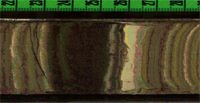CoreWall: A Visualization Environment for the Analysis of Lake and Ocean Cores
December 12th, 2004
Categories: Applications, MS / PhD Thesis, Software, Visualization

Authors
Rao, A., Kamp, B., Noren, A., Ito, E., Schnurrenberger, D., Morin, P., Leigh, J., Rack, F., Johnson, A., Renambot, L.About
A primary need for studies of sediment and rock cores is an integrated environment for visual core description. Digital line-scan images of split-core surfaces should be the fundamental template for all sediment descriptive work, including annotations about structures, lithologic variation, macroscopic grain size variation, bioturbation intensity, chemical composition, and micropaleontology, among other features. Hard-rock visual core descriptions have corresponding requirements. The integration of core-section images with discrete data streams and nested images provide a robust approach to the description of sediment and rock cores. This project provides for the real-time and/or simultaneous display of multiple integrated databases, with all the data rectified (co-registered) to the fundamental template of the core image. Virtual initial core description (ICD) sheets are created on-the-fly as data are acquired. The visualization tool enables rapid multidisciplinary interpretation during the ICD process. Such interpretation is commonly limited to the final step before publication of study results.
A database exists to contain information on submitted data, including multi-sensor core-logger data, high resolution scanned images of split core sections, text annotation and photomicrographs of smear slides of lithologic constituents and microfossils. A prototype environment for working with the high resolution data is the Personal GeoWall-2, a single computer used to drive 6 tiled LCD screens and a pair of projectors. The combination allows one to juxtapose high resolution core images and sensor data next to fully stereoscopic visualizations.
Resources
Citation
Rao, A., Kamp, B., Noren, A., Ito, E., Schnurrenberger, D., Morin, P., Leigh, J., Rack, F., Johnson, A., Renambot, L., CoreWall: A Visualization Environment for the Analysis of Lake and Ocean Cores, Geological Society of America Abstracts with Program, vol 36, no 5, Denver, Colorado, pp. 273, December 12th, 2004.